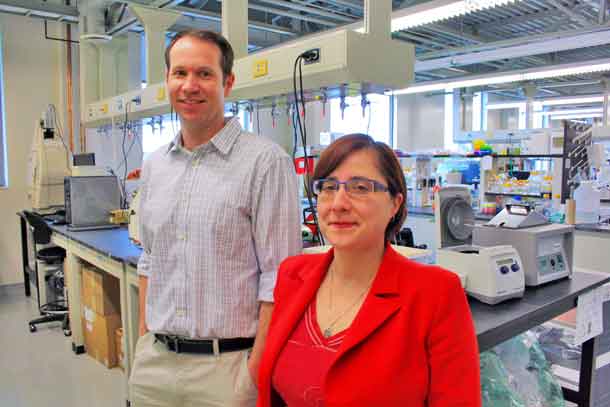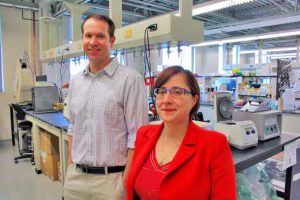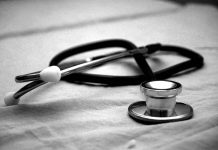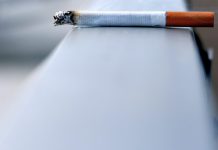

by Graham Strong
THUNDER BAY – HEALTH – Cancer cells have a natural defence against radiation therapy and chemotherapy – in fact all cells in the body have some sort of protection from harmful radiation and chemicals. One highly specialized research project happening in collaboration with several institutions in Thunder Bay may develop an innovative new way to break down those protections in cancer cells.
Or, perhaps more accurately, two new ways.
Dr. Simon Lees, a research scientist and associate professor at the Northern Ontario School of Medicine (NOSM), began by reviewing the literature that investigated the use of a sugar molecule called 2-DeoxyGlucose (2-DG) as part of a combination cancer therapy during radiation and chemotherapy treatment. This molecule essentially blocks cancer cells from using sugars, weakening their defences and in theory boosting the effects of cancer treatment.
Dr. Lees wondered if a similar approach could be researched in Thunder Bay.
“I knew from working with Dr. Chris Phenix at the Thunder Bay Regional Health Research Institute that we could make FDG in the lab (which is similar 2-DG) – we wouldn’t have to buy it,” Dr. Lees said. This “cold” FDG is the non-radioactive version of 18F, the radiochemical tracer used in PET imaging. “Other research has found that FDG might actually work better than 2-DG, and perhaps be less toxic.”
The pre-clinical research would investigate the effectiveness of combining FDG treatment with either chemotherapy or radiation therapy on human cancer cells (but not in the human body) with and without FDG. Dr. Lees partnered with Dr. Margaret Anthes, a radiation oncologist at Regional Cancer Care Northwest at Thunder Bay Regional Health Science Centre, for this phase of the project.
But Dr. Lees wanted to take the research one step further. As it happens, the Health Research Institute is also home to one of the world’s most advanced high-intensity focused ultrasound (HIFU) research programs. Dr. Laura Curiel and other researchers at the Institute are studying how HIFU can be used as a combination treatment with radiation therapy. HIFU warms the tumour cells to about 42 degrees Celsius, “sensitizing” the cancer cells in order to amplify the effects of radiation therapy. So why not study the results of combining all three?
“We are in a unique position to be able to do this type of research because we have all the equipment we need at the Research Institute (including HIFU, the microPET for monitoring tumour size, and the equipment needed to make FDG),” Dr. Curiel said.
Dr. Anthes, Dr. Lees, and Dr. Curiel received a Northern Ontario Academic Medicine Association (NOAMA) grant to conduct the study. As far as the researchers know, this will be the only research project in the world studying the effects of using all three treatments together.
“The first step we have to do is determine if the combination of FDG and radiation therapy is effective before we try all three,” Dr. Lees said. “We’ve already completed the early research where we verified that the FDG does inhibit glucose uptake in tumours for about two hours after injection.”
If successful, it could lead to Phase I clinical trials for cancer patients. The Clinical Research Services Department at the Thunder Bay Regional Health Sciences Centre has the capacity to participate in and even lead this type of clinical trial.
“We have the equipment and researchers who would be interested in pursuing it,” Dr. Lees said.






